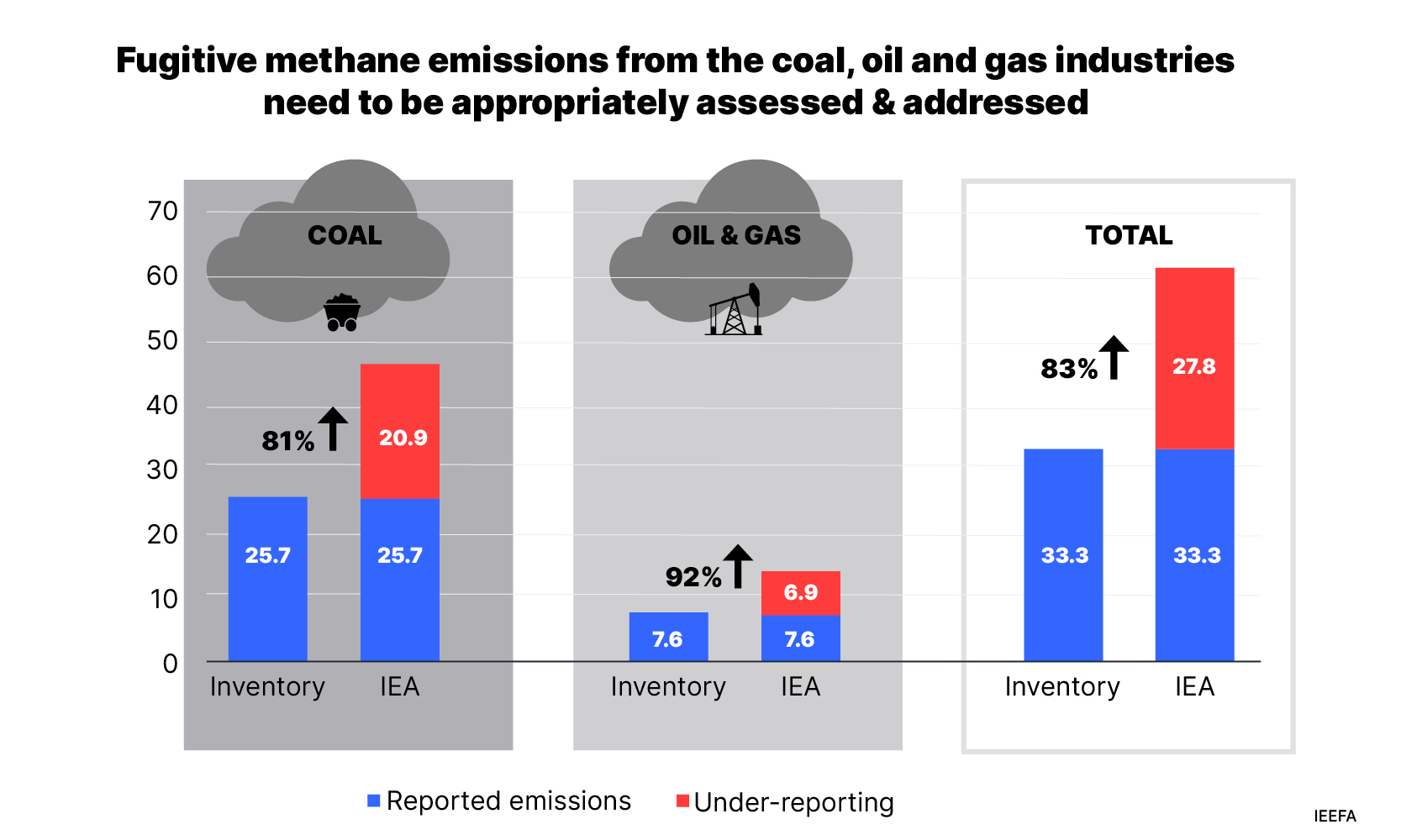Australian energy is a filthy, lying carbon pump. Via IEEFA.
Our analysis indicates that fugitive methane emissions from coal mining and oil and gas supply have likely been grossly underestimated to date – by about 80% for coal and 90% for oil and gas. Correcting this under-reporting would have big implications for industrial facilities covered by the Safeguard Mechanism. In order to stay within the newly introduced emissions caps, facilities would have to double their rate of decarbonisation and halve their emissions between 2023 and 2030. This highlights the need for urgent action to improve methane emissions monitoring in Australia and to develop a plan to address domestic methane emissions.

Methane represents about 18% of global emissions and is estimated to have contributed to around 30% of the rise in global temperatures since the Industrial Revolution. While it represents a much smaller proportion of emissions in mass, it has had a disproportionate impact on climate change. Methane has a short lifespan – around 12 years – but it absorbs much more energy than CO2 while it exists in the atmosphere. Over a 100-year period, methane warms as much as 30 times more than CO2. However, over a 20-year period, methane warms as much as 82 times more than CO2.

